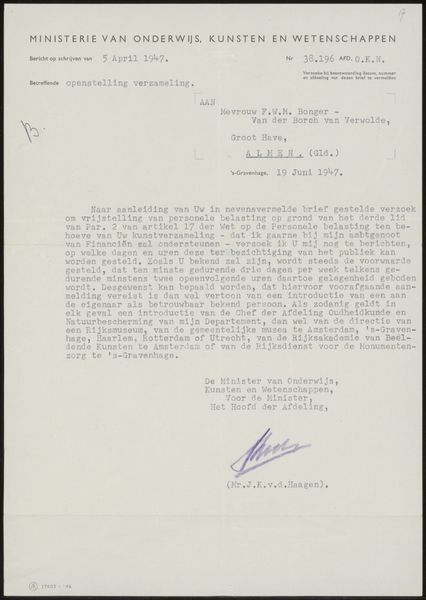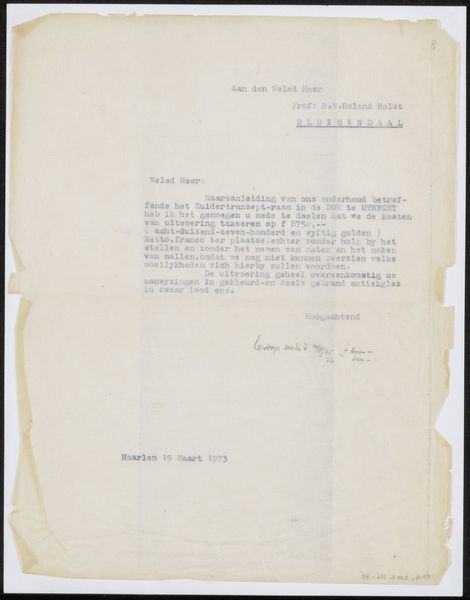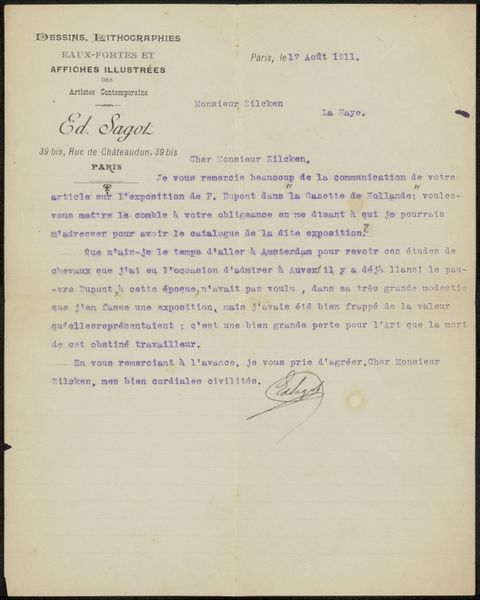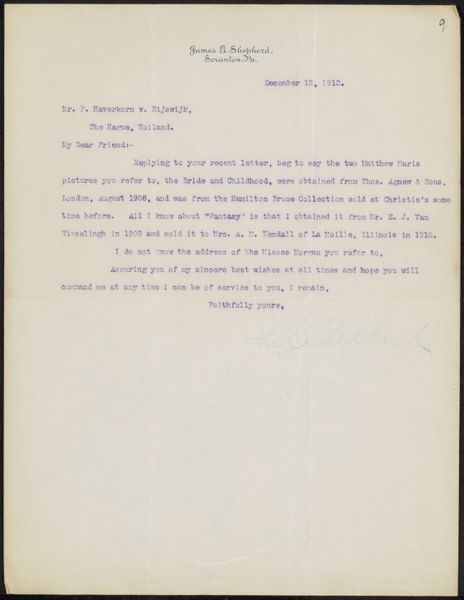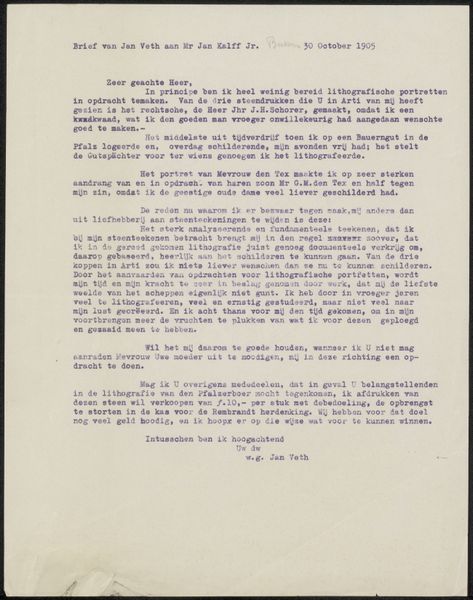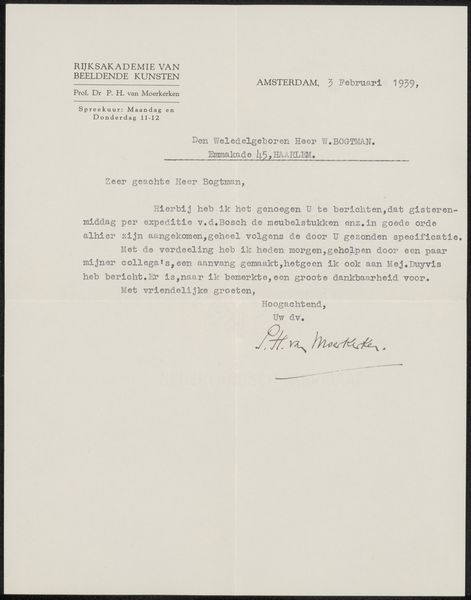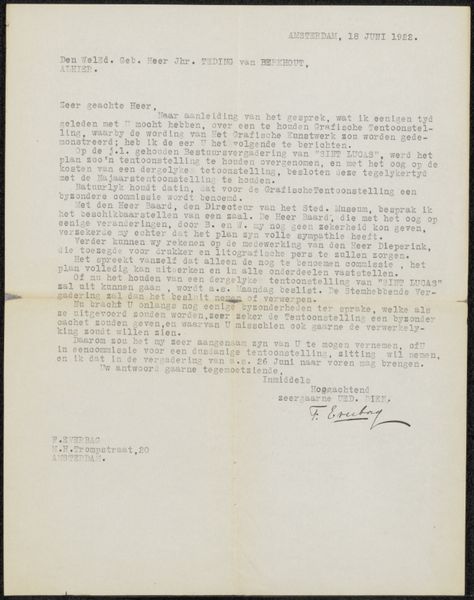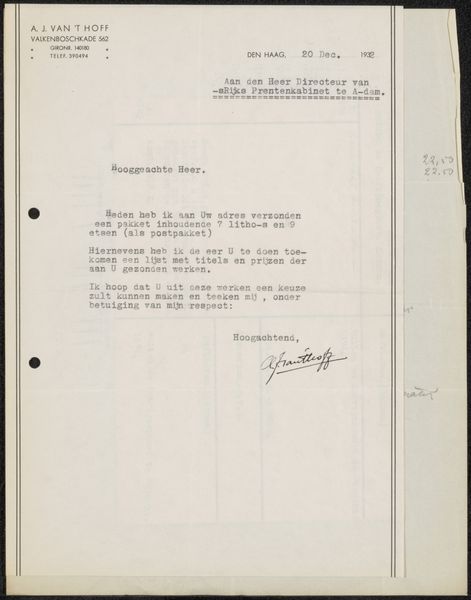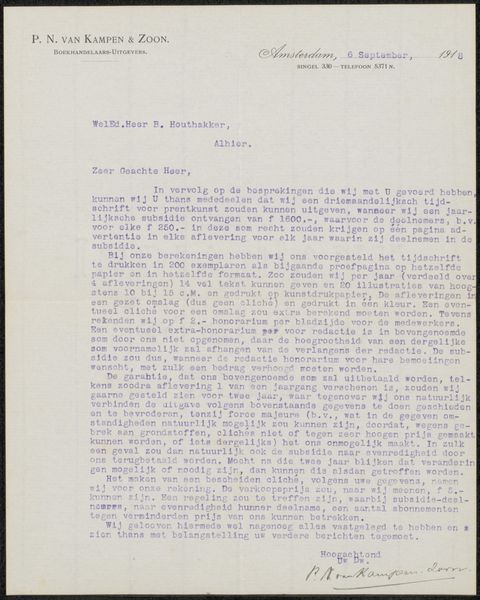
paper, ink
#
script typography
#
hand-lettering
#
hand drawn type
#
hand lettering
#
paper
#
personal sketchbook
#
ink
#
hand-drawn typeface
#
fading type
#
sketchbook drawing
#
sketchbook art
#
calligraphy
#
small lettering
Copyright: Rijks Museum: Open Domain
Curator: Take a look at this fascinating document: a letter titled "Brief aan Philip Zilcken," likely dating between 1908 and 1929, crafted by Louis Piérard. It’s a piece composed with ink on paper. What are your first impressions? Editor: It feels almost clandestine, doesn't it? The slightly faded ink, the dense text, like a whisper from another era. And is that handwriting scrawled on the margins? It lends an intensely personal quality to something ostensibly formal. Curator: Precisely. The letter is actually a call to action for the protection of the Louvre, addressed to Philip Zilcken, an artist and critic in Amsterdam. Piérard is soliciting Zilcken's support for an international petition. Editor: So it’s not just an individual plea but part of a broader campaign. I see that this touches on issues of cultural heritage and collective responsibility, themes quite relevant today considering discussions around restitution and who gets to preserve art for future generations. Curator: Exactly. What strikes me is the language; Piérard argues that because the Louvre belongs to the "genius of each people," its protection should be a collaborative, global effort. He beautifully uses words like "Merveilleux Sanctuaire" to talk about the museum, so descriptive. It elevates the Louvre beyond a mere building. Editor: And there's this urgency evident in his tone. He mentions the threat of fire – a tangible danger, certainly. This framing also introduces an emotional register as Piérard connects to anxieties about the Louvre and how those are caused, at least according to this writing, to multiple sources, really implicating anyone as possibly responsible for its fate if nothing is done. But let's go back to those marginal notes. Can you decipher them? Curator: He basically implores Zilcken to give "sa belle influence." There is some reference to, possibly, La Hollande. It's interesting that in addition to this beautifully worded typewritten document there is a personalized ask to Zilcken. Editor: So, beyond institutional preservation, this artefact showcases the essential roles of art critics like Zilcken in mobilizing a political position. Did Zilcken even agree? These personal dimensions speak volumes, then and now, on power dynamics, art criticism, and advocacy. Curator: Looking at this piece, I’m struck by the timelessness of it. The concerns about preserving art institutions remain relevant. The beauty of it as a physical piece persists despite the time and the message. Editor: And I see in Piérard's appeal an ongoing effort to internationalise the art world. An appeal that requires an examination of nationalism and colonialism if one were to ask whether its ideals for equitable artistic participation were then and even are now, being realized.
Comments
No comments
Be the first to comment and join the conversation on the ultimate creative platform.
